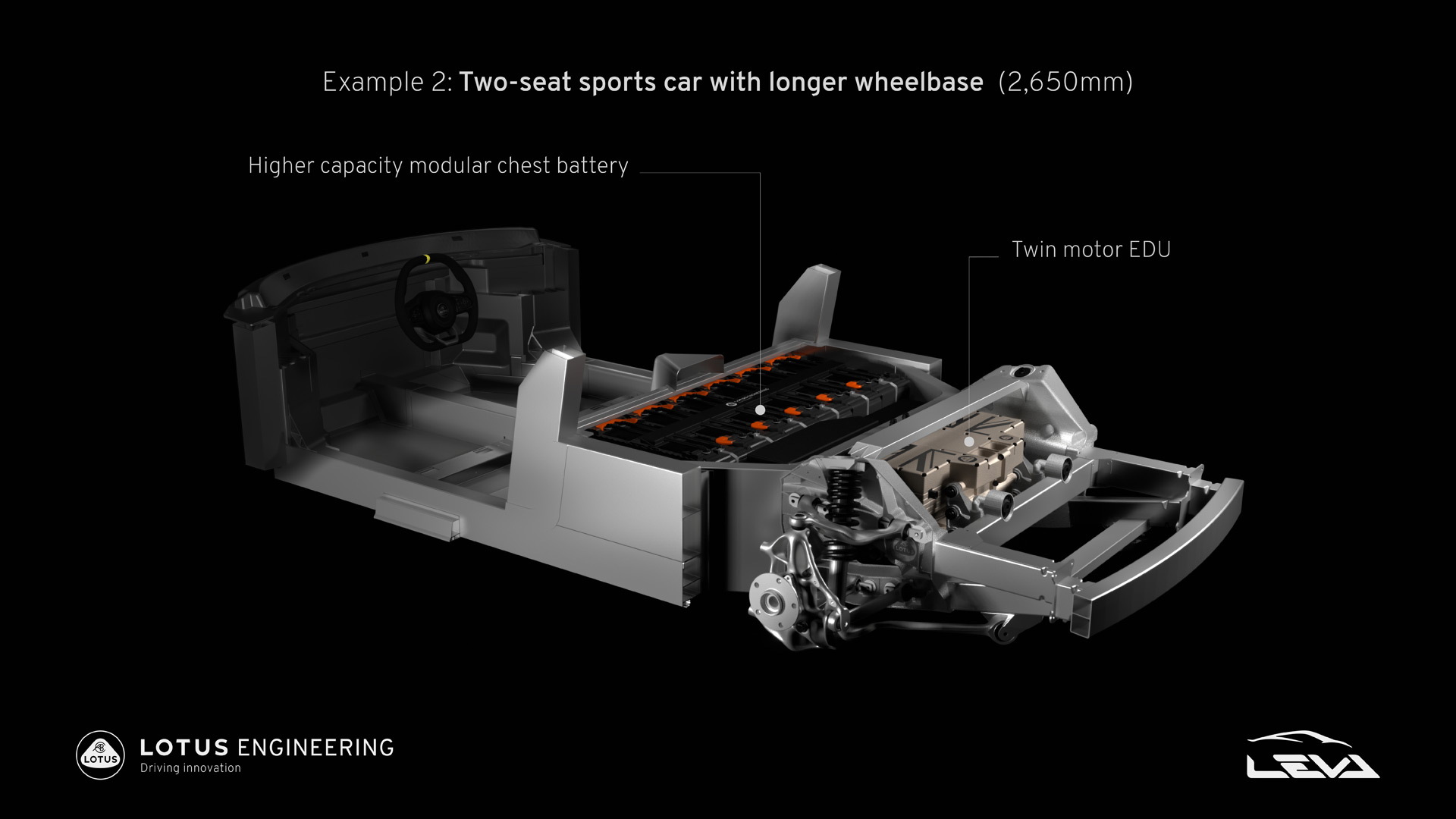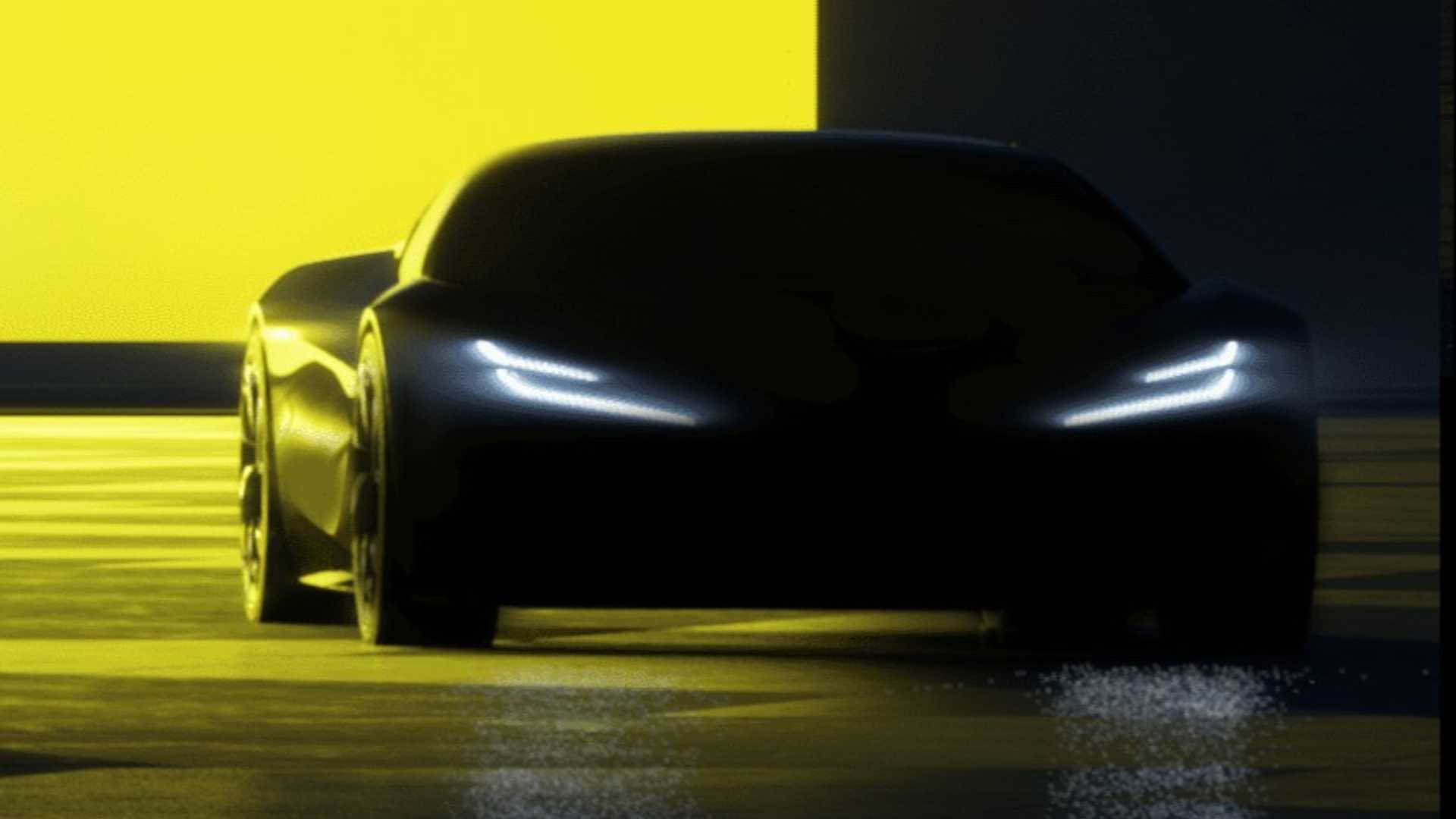Lotus on Tuesday provided a first look at a new modular platform being developed for its electric sports car code-named Type 135, which is due in 2026.
The platform, referred to internally as E-Sports (previously Lightweight Electric Vehicle Architecture, or LEVA for short), is one of four platforms that will underpin Lotus vehicles this decade.
The others include the internal-combustion platform underpinning the Emira, the Extreme platform underpinning the Evija electric hypercar, and a planned Evolution platform that will underpin a pair of crossovers (Type 132 and Type 134) and a four-door coupe (Type 133) that Lotus will launch before its electric sports car. Lotus previously released a teaser shot showing its upcoming models, with the sports car depicted on the far right.

Lotus EV teaser
Crucially, the E-Sports is the platform that Alpine will use for its upcoming electric sports car. Lotus is also open to licensing the platform to other firms.
The platform is being developed by a consortium led by Lotus, and including researchers from Brunel University London. Thanks to their efforts, the rear structure is 37% lighter than the structure on the Emira platform, which will be helpful in offsetting the weight of the battery. Key weight-saving measures include utilizing the vehicle structure as the battery enclosure, having an integrated electric drive unit, eliminating bolt-on sub-frames, and optimizing the multi-link suspension components.
“In true Lotus spirit, significant weight savings have been achieved throughout, with a focus on ultimate performance, efficiency and safety being engineered into the structure from the outset,” Richard Rackham, head of vehicle concepts at Lotus, said in a statement.

Lotus E-Sports platform (Project LEVA) for 2+2 electric sports cars
In the case of the battery, the platform is modular in nature and thus can accommodate the fitment of the battery in either the vehicle floor or in the rear section. The floor-mounted battery (shown above) is designed for a long-wheelbase sports car with a tall body and 2+2 seating arrangement, and is a maximum 66.4 kilowatt-hours in capacity.
The rear-mounted battery is designed for strict 2-seaters with low bodies, and in this case the platform can support short- and long-wheelbase lengths. Here, the short-wheelbase configuration can support a battery with a maximum capacity of 66.4 kwh and the long-wheelbase configuration can support a battery of up to 99.6 kwh.
In the case of the long-wheelbase configurations, a twin-motor electric drive unit delivering a maximum 871 hp can be fitted. The short-wheelbase only allows a single-motor electric drive unit, delivering a maximum 469 hp. In each configuration there's rear mounting of the electric drive unit only.





